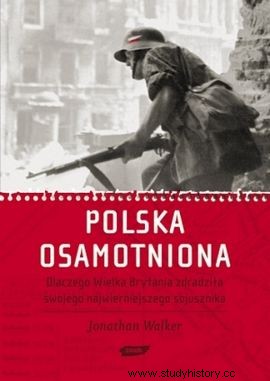In the summer of 1944, members of the Sonderkommando from Auschwitz-Birkenau saw the deaths of hundreds of thousands of Hungarian and Łódź Jews with their own eyes. Therefore, when they realized that the Germans also intended to send them to the gas chambers, they decided to act. The result was the greatest prisoner revolt in the history of the infamous extermination camp.
Sonderkommando (special unit) at Auschwitz-Birkenau consisted almost entirely of Jews. Initially, its ranks consisted of about 200 prisoners, but in the spring of 1944 this number increased to over a thousand. People who came to him did not know what to expect. It was only when the first day of "work" came that it turned out that the Germans were using them in the implementation of their criminal plans.
Their first task was to lead the newly arrived victims to the gas chambers. For this purpose, unsuspecting people had to be lulled to sleep. Then, when all of them were killed, the prisoners had to transport and burn the corpses. Their duties also included the segregation of clothes and personal belongings of the murdered.
We can't leave any witnesses
As you can easily guess, other inmates in Auschwitz I thought they were collaborators who wanted to save their own skin at all costs. After all, even the most zealous members of the Sonderkommando they couldn't avoid death indefinitely.

Crematorium IV, it was there that on October 7, 1944, the greatest prisoner revolt in the history of the Auschwitz-Birkenau camp began.
On the contrary. This was because the Germans changed the composition of the entire special unit after each major extermination operation of Polish and European Jews. It was supposed to be no different in the fall of 1944. This time, however - as he writes in his book Polska lonely. Why Great Britain has betrayed its most faithful ally "Jonathan Walker - these plans provoked an unexpected reaction from prisoners . On October 7, they started the biggest revolt in the history of the camp!
The plans to take up arms went back to June of that year. It was then that several prisoners asked the leader of the camp underground, Jakow Kaminski, for help. Unfortunately, thanks to the denunciation lodged against Kamiński, the SS quickly learned about everything. As a result, he was murdered, but - perhaps surprisingly - the group's leadership survived. Efforts were still made to "organize" any kind of weapon - knives, crowbars and other similar items - and through the fence to make contact with other prisoners in order to obtain the necessary items.
They even managed to obtain a certain amount of explosives, which were donated by female prisoners working in the dismantling of planes at the Krupp camp factory. This is how the next months passed. However, after the liquidation of the Łódź ghetto, the Germans decided it was high time to get rid of the uncomfortable witnesses.
The signal that this was the end was the announcement that 300 prisoners were needed to help Otto Moll, one of the worst SS men in the crematoria, who recently left to take the position of commandant of the sub-camp in Gliwice . All members of Sonderkommando they were well aware that this was only a ruse to lull them into vigilance. In this situation, there was nothing else to do but grab a gun and try to escape.
There is no time to waste
As planned, so was done. On October 7, at 1.30 p.m., the prisoners working in Crematorium IV attacked the SS men guarding them with the help of crowbars, axes and stones. A several-minute fight ensued, as a result of which the guards were overpowered and the crematorium was blown up. This was a signal to the crew of crematorium II, who also revolted and burned their guards alive in the crematorium furnaces.

The crematorium furnace from the Auschwitz camp. It is, among others members of the Sonderkommando worked with their service (photo:Pimke; license CC ASA 3.0).
The next step was to escape. Initially, everything was going well and about 250 prisoners got out behind the camp wires. Unfortunately, soon the Germans surrounded them in a nearby forest and a real slaughter began. Most of the rebels were murdered on the spot.

Nevertheless, 12 prisoners managed to break out of the trap when the attention of the SS men was distracted by Soviet planes that were flying to bomb Wrocław. The Jews even reached the village of Rajsko, but the escape did not last long. The dog guards quickly caught on to them, surrounding the twelve in the barn and setting them on fire.
As Jonathan Walker writes in his book, many corpses of escapees were taken back to the camp and displayed to the public as a warning to the remaining prisoners. A further 200 members of the Sonderkommando, were also executed who helped in the escape. In addition, in order to find out where the rebels had their explosives from, the camp authorities began torturing female prisoners working in the Krupp factory.
German losses were incomparably smaller. Only three SS men were killed. However, the revolt saved the lives of a group of Jews. As a result of the chaos in the camp, the guards were forced to empty the gas chamber in crematorium V. Some of the survivors that day managed to survive until the end of the war.
